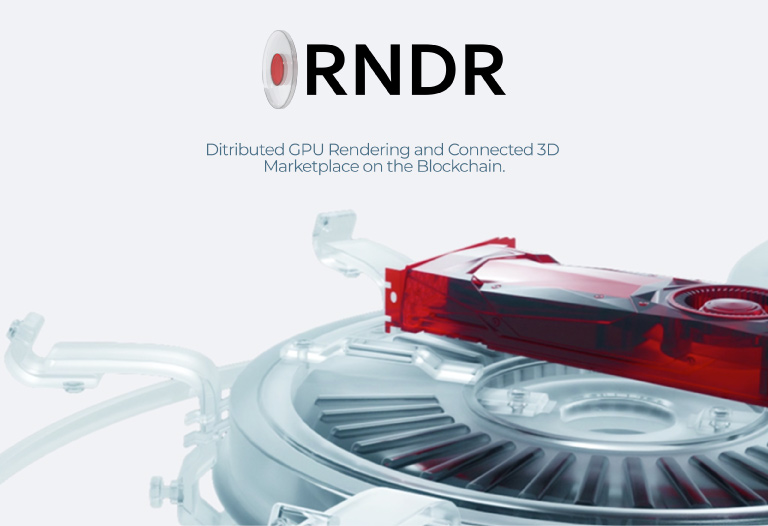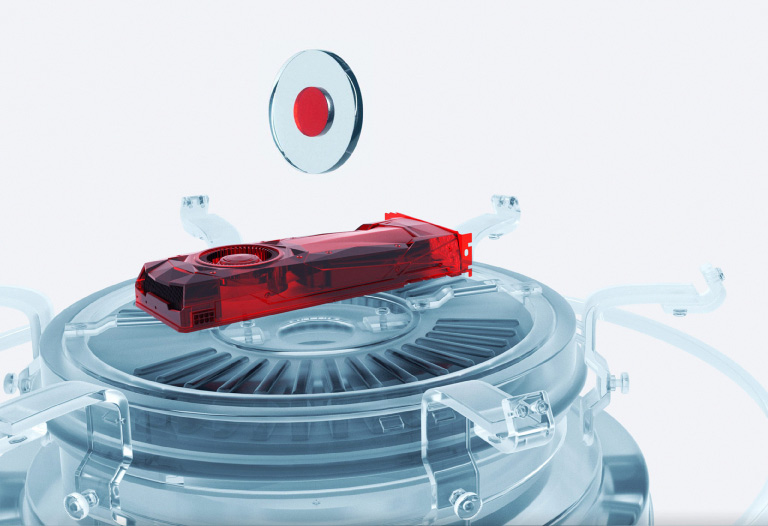
Table of Contents
ToggleRender Network is an innovative project with a clear objective: to build a distributed rendering network.
The purpose is based on at least two interesting observations. On the one hand, there is a lot of GPU equipment around the world, which goes unused for a long time. On the other hand, the growing interest in metaverses could lead to a shortage of graphics cards.
Perhaps this last hypothesis may be a bit exaggerated, but it is a possibility and we should contemplate it. Undoubtedly, it is a wise decision to anticipate this possible shortage and Render Network gives us a solution in advance.
Let’s understand a little more about what Render Network is and why it has the support of major industry players.
What is Render Network?
Render Network is a project that seeks to scale and distribute or decentralize the power of graphics cards. Through rendering technology, known as OctaneRender, users can combine the power of their GPUs to solve the needs of large or small users.
Why do we need this network, you may ask? The answer lies in the present and in what we foresee for our future. Rendering is the computational process that allows, among other things, to generate highly realistic images.
For example, for a 2D image to take on 3D characteristics and its resemblance to reality to increase exponentially, it needs to go through a rendering process.
Perhaps now, the network is making more sense, isn’t it? However, it is necessary to know the hypothesis that the creator of this network raises in order to understand the need for this Render Network.
What is Jules Urbach’s hypothesis?
Obviously, Jules is the mastermind behind Render Network and his creation stems from a hypothesis. According to Jules, a movement is currently brewing that will become commonplace in the future: metaverses.
As I have described in this blog, a metaverse is nothing more or less than a virtual representation of a universe parallel to the “real” one in which we live. For this metaverse to seduce us and immerse us in it, it is necessary that its resemblance to reality reaches higher levels.
This is where rendering and high-definition images come into play. Therefore, the power of the graphics card, or GPU, will be extremely necessary and, in Jules’ eyes, scarce.
Knowing his hypothesis, let’s look at the solution Jules came up with.
Render Network and Octane Render
Jules developed a technology known as OctaneRender. To date, it is the most reliable and fastest way to perform rendering processes using GPUs or graphics cards.
Given the characteristics of blockchain technology, Jules thought it would be a good idea to decentralize and, at the same time, make the power of these cards scalable. For him, combined we are stronger and can better meet growing needs.
Thus, pursuing these premises, Jules devised a network, Render Network, in which those users who own a GPU with idle capacity, join together to offer it and in exchange receive a token, RNDR.
It is thanks to this network and the OctaneRender technology that we can see how different graphics cards connected to this network can join forces and solve rendering jobs.
With this type of solutions, we are covering the growing need for rendering jobs that, little by little, metaverses are beginning to require.
Now it’s time to dive into how Render Network works.

How the Render Network works
After this brief introduction, we know what Jules thinks about the future and how he thinks we can solve certain issues that concern him. It is now up to us to understand how Render Network works, to know the actors of the network, to know how they interact and what role blockchain has in this world.
The characters inside Render
In every blockchain we find different actors that fulfill essential functions for its normal operation. Let’s get to know them.
-
- Operators
The operators are the owners of the graphics cards or GPUs. They will be in charge of providing the hardware to perform the rendering jobs and will be rewarded with the network token, RNDR.
By connecting their GPUs to the network, they become “node operators”, performing the tasks that generally fall to such agents in a decentralized network.
After this connection to the network, they will be ready to accept jobs and, by means of OctaneRender technology, carry out the jobs they receive.
But who submits those jobs?
-
- Creators
The other side of the coin. The creators are the users who send their work through the network. All those who require the computational power that GPUs can deliver, to perform a rendering job, can find a solution to their needs here.
These network players will have to acquire RNDR tokens, as this will be the currency in which they will pay, not only for their work, but also for transactions on the network that involve sending these files.
Now that we know who is involved, let’s turn to the process itself.
The process within the Render Network
As I wrote in the presentation of the network players, once the GPUs are connected to the network, the operators are ready to receive jobs.
The moment a creator, has finalized the file they wish to submit for rendering is when the process can begin to activate. Powered by the Ethereum network, the file is received by a Smart Contract that upon receiving the necessary RNDRs, redirects the file to an operator.
Render Network is in charge of making the necessary calculations to know how many operators to involve in the work and thus achieve an optimization of both resources and results.
Once the rendering job is finished, the operators involved receive the corresponding RNDRs as a reward and the job is again received by the Smart Contract. At that point, the creator gets the file and the relationship is concluded.
A simple process to explain. However, its impacts require further development.
The impacts of Render Network
As I anticipated earlier, the simplicity of the process does not minimize the enormous impacts that this network gives back to the world. Let us analyze them.
Property rights
NFTs have come to revolutionize the relationship of artists with their work, we have heard countless times. Render Network is a great example to support this statement.
Proving ownership of an image, video or file being rendered has never been easier. By using the benefits of Render, creators will not only be able to have high definition images, but also the ownership record of them in an immutable way.
Scalability of the computational power of GPUs
Jules developed OctaneRender in the past, giving birth to a new way of performing rendering tasks with graphics cards. Now, with Render Network, he goes one step further and makes this kind of work decentralized and scalable.
But what do I mean by this? That it is not necessary for a single GPU to do all the work, nor is it necessary for all the power of a GPU to be devoted to this network, to get work done.
Render comes to combine the power of GPUs and use that idle capacity that would otherwise be lost.
What are the use cases of the network?
To list just a few, knowing that according to Jules the metaverses will be the biggest consumers of the power provided by the operators, we can add:
-
- Video games
- Augmented Reality
- Medicine (3D imaging)
- 3D printing
- Virtual reality
- Multimedia content
- Video games
It is clear that this short list could easily grow in the coming years.

Render and its important alliances
Well, now we know what Render Network is capable of doing and, at least to me, there are enough arguments to believe that its future is, a priori, interesting.
But, there is one thing that will leave us even more expectant about the upcoming events surrounding Render and that is its partnerships.
The first one is perhaps the least attractive for us who love decentralization, but it is extremely big and we can’t deny its importance. I’m talking about Facebook, who were the first to get involved with the Render team.
Now if talking about decentralized projects, the attention on this network was born from extremely important projects such as:
-
- Decentraland, the largest metaverse to date, built on Ethereum network
- Sia, probably the most important decentralized data management platform to date
- Basic Attention Token, the famous token given as a reward for watching advertisements in the Brave browser.
- Algorand, a blockchain capable of supporting smart contracts, on which expectations are high
Undoubtedly, that these giants, in each of their environments, consider Render Network for partnerships, positions this project better for the future world.
A reflection
The history of mankind has plenty of examples where those who foresee the future with predictability are those who receive the laurels.
Perhaps the Render Network project and its hypothesis sound a bit far-fetched today. But, if the bull markets have taught us anything, it is that no one is capable of projecting the levels of growth we may see and second, that video boards can quickly become scarce.
Render Network aims to prepare us for a future that is getting closer every day. And, fortunately for our ecosystem, it shows us more utilities enhanced thanks to decentralization.



